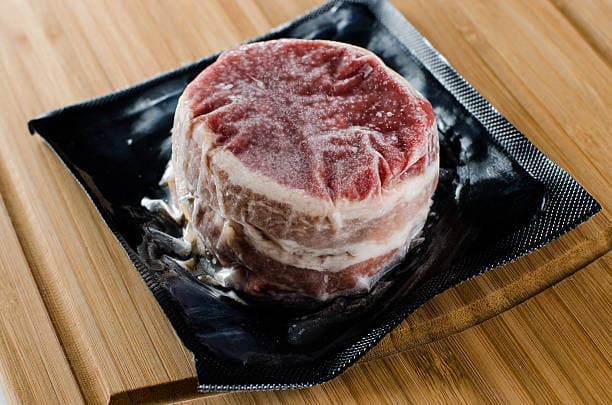Have you ever opened your freezer to find your meat covered in tiny ice crystals? While this may seem like a harmless inconvenience, it actually has a significant impact on the quality and taste of the meat. In this article, we will explore the science behind what causes ice crystals in meat and how it affects our food.
Understanding the Freezing Process
Before diving into the specifics of the formation of ice crystals, it’s important to understand the freezing process. Freezing is a common method of food preservation, as it slows down the growth of microorganisms that can cause spoilage. The temperature is lowered in frozen food below its freezing point, which causes the water molecules in the food to solidify into ice.
Please note that the freezing process is not as simple as just lowering the temperature. If food is freezing too slowly, it can form large ice crystals that damage the cell structure and alter the texture of the food. But if the food is freezing too quickly, it can result in the formation of smaller ice crystals that are less damaging to the cells.
Factors That Affect Ice Crystal Formation
Several factors can influence the formation of ice crystals in meat.
- Temperature
The first is the temperature at which the meat is frozen. If the temperature is too high, the meat will freeze slowly and form large ice crystals. The meat will freeze too quickly and form small ice crystals if the temperature is too low.
- Water content
The second factor is the initial water content of the meat. The more water that is present, the more ice crystals will form. This is because water is the main component that solidifies into ice during freezing. Therefore, lean meats like chicken and fish, which have a higher water content, are more prone to ice crystal formation than fatty meats like beef and pork.
- Ice Nucleation Agent
The third factor is the presence of ice nucleation agents. These are particles that can act as a nucleus for ice crystals to form around. Common ice nucleation agents in meat include proteins, lipids, and minerals. If there are more ice nucleation agents present, there will be more ice crystals formed.
- Freezing rate
Lastly, the freezing rate is also a factor that affects ice crystal formation. As mentioned earlier, freezing too slowly or too quickly can result in the formation of large or small ice crystals.
Impact of Ice Crystal Formation on Meat Quality
The formation of ice crystals in meat can have a significant impact on its quality. When ice crystals form, they can damage the cell structure of the meat, causing it to become dry and tough. This is because the ice crystals puncture the cell walls, which allows the moisture to escape when the meat is thawed.
Besides altering the texture of the meat, the formation of ice crystals can also affect its taste. When the cell structure is damaged, the meat can lose its natural juices and flavor. So the meat that has been frozen and thawed often tastes bland and dry. You can get more detailed information about what ice crystals in meat indicate by clicking here.
Preventing Ice Crystal Formation in Meat

While it may be impossible to prevent the formation of ice crystals in meat, following steps are helpful to minimize their impact.
- The most important thing is to freeze the meat as quickly as possible. For solving this you can place the meat in a freezer that is set to a low temperature, preferably below -18°C (0°F).
- Another way to minimize ice crystal formation is to wrap the meat tightly in plastic wrap or aluminum foil before freezing. This will help to prevent moisture loss and protect the meat from freezer burn.
- It’s also a good idea to place the meat in a single layer in the freezer, as this will allow it to freeze more quickly and evenly.
FAQS
- Can you still eat meat with ice crystals?
- Yes, you can still eat meat with ice crystals. However, it may not be as high-quality as meat without ice crystals.
- How can I prevent ice crystals from forming on my meat?
- To prevent ice crystals from forming on your meat, freeze it quickly at a low temperature and avoid freezing and thawing multiple times.
- Can I thaw meat at room temperature?
- It is not recommended to thaw meat at room temperature, as this can allow harmful bacteria to grow. Thaw meat slowly in the refrigerator or use a cold water bath instead.
- Can I refreeze meat after it has been thawed?
- It is generally not recommended to refreeze meat after it has been thawed, as this can lead to a decrease in quality and safety.
- How long can I keep meat in the freezer?
- The length of time that meat can be stored in the freezer depends on the type of meat and how it has been packaged. Generally, meat can be stored in the freezer for several
Take Away
In conclusion, the formation of ice crystals in meat is a common problem that can significantly impact its quality and taste. Understanding the factors that contribute to ice crystal formation, such as the initial water content, presence of ice nucleation agents, and freezing rate, can help you take steps to minimize its impact on your meat.

